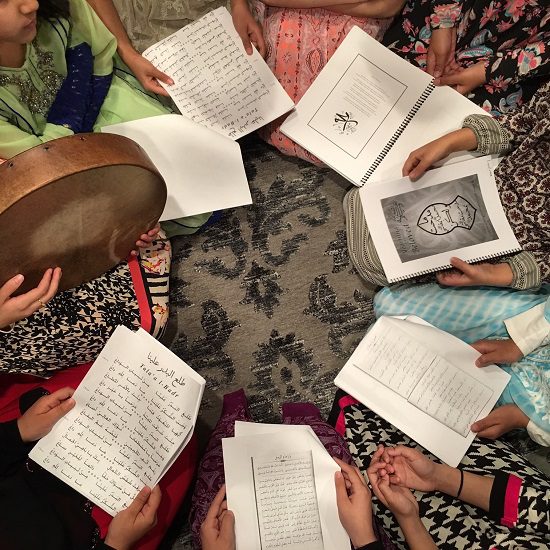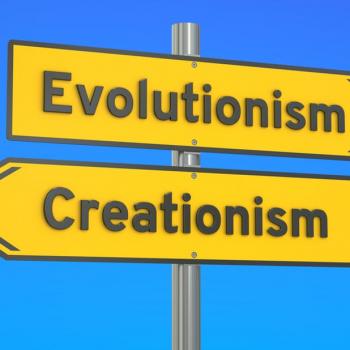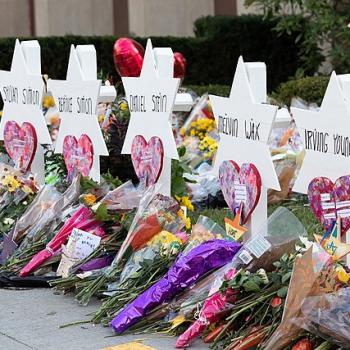 |
|
…or bumper stickers
|
The compatibility of Islam and pluralism is sometimes defended by referencing examples of Islamic “tolerance” of minorities in centuries past. Some Muslims’ interpretation of pluralism is colored by Islam’s political power in the past,[1] and they define religious tolerance in terms of how religious minorities were treated in the Islamic Empire—that is, as groups that were free to practice their religion as long as they obeyed the Islamic political order and paid taxes in return for protection by the Islamic state. As some modern Islamic thinkers argue, however, this form of religious tolerance is inadequate in light of changing human rights standards.[2] Whereas the Islamic Empire’s notion of religious tolerance may have been appropriate for that time, Muslims in the modern age must re-evaluate and realize that the historical approach to religious tolerance must be modified. Conditional and condescending “tolerance” must be redefined to include mutual respect, equal treatment, and robust pluralism.
Contemporary Muslims’ effort to grapple with pluralism and their political position in relation to the religious “other” is in some ways analogous to the challenge the American religious right has faced realizing that America is not a “Christian country”—at least not in the sense that allows conservative Christianity to hold a privileged position. In both cases, a religious group that once dominated a society is coming to terms with greater diversity and the demands of justice in a pluralistic context.[3]
For Muslims, dealing with pluralism will require creative re-interpretation of their scriptural sources and re-evaluation of their historical experiences. This process of creative analysis is evident in Farid Esack’s article, “Muslims Engaging the Other and the Humanum,”[4] which provides a new Islamic perspective on modern religious pluralism. The question Esack seeks to address is: “How do Muslims engage the religious other in a world that increasingly defies geographical, political, religious, and ideological boundaries?”
According to Esack, Qur’anic discussion of the other is framed largely in terms of the early Muslims’ relation to the People of the Book. The reasons for this preoccupation are several and include the fact that, after the liberation of Mecca in 630 AD, most of the pagans converted to Islam. As such, early Islam formulated its position regarding religious tolerance with Jews and Christians living in the Muslim community.
Religious tolerance in the Qur’an is related to specific communities of Jews and Christians and the ways in which they treated and were treated by the early Muslim community. Because of the specificity of the groups addressed by the Qur’an, Esack holds that to generalize treatment of all Jews and Christians in a time and space beyond the original Medinan community is over-simplistic. Such a broad analysis ignores theological diversity within the Christian and Jewish communities; it also fails to recognize that these groups’ practices and beliefs evolve or change with time. A more accurate reading of the Qur’anic discussion of Jews and Christians, therefore, should focus on the specific “sources of beliefs, as well as their many nuances, which characterized the various communities by the early Muslims.”
Esack notes that throughout Islamic history the phrase “People of the Book” has not been defined in relation to a dogma; rather, the focus has been on “area of practice and attitudes.” At various times in Islamic history, therefore, the category included groups as diverse as Hindus, Buddhists, Magians, Zoroastrians, and Sabians: “In all of these attempts to extend the boundaries of the [Q]ur’anic People of the Book, Muslim scholars implicitly acknowledged the situation-boundedness of the Qur’anic categories.”
If “People of the Book” signifies those to whom Muslims are required to extend religious tolerance, and who as such hold a special place in Islam, then the exact definition of this term is central to any analysis of Islam’s approach to religious pluralism. According to Esack, the main element differentiating the pagans from the People of the Book during the early Medinan period was the former’s use of institutional religion to systematically oppress and exploit the disadvantaged. Pagans, or the “mushrikun,” represent those who, according to the Qur’an, do not deserve Muslims’ religious tolerance. Esack quotes Fazlur Rahman, who explains that the early Qur’anic texts:
[c]an only be understood against their Meccan background, “as a reaction against Meccan pagan idol-worship and the great socio-economic disparity between mercantile aristocracy of Mecca and a large body of its distressed and disenfranchised population … Both of these aspects … are so heavily emphasized in the Qur’an that they must have been organically connected with each other.”
As Rahman’s explanation demonstrates, the political act of resisting oppression is part of—indeed, central to—the Islamic approach to religious tolerance. This view of religious tolerance should not, however, be over-generalized and must involve an analysis of particular situations. For example, superficial judgments by Islamic extremists, such as Osama Bin Laden, that Jews and Christians oppress Muslims in various parts of the world and should therefore be fought may seem to fit Esack and Rahman’s connection of social oppression to religious intolerance. However, even a mere cursory analysis of the issue reveals that it is over-simplistic to equate the acts of some Christians and Jews to all Christian and Jews. It is, moreover, logically and theologically problematic to equate the political acts of some individuals with their religion or religious beliefs.[5]
In the modern age, the analysis of the “other”—whether that “other” be the non-Muslim, the non-Christian, the non-Jew, the non-Hindu, etc.—must be nuanced, careful, and deliberate. Revisiting the historical context and theological basis of religious tolerance prompts a renewed focus on rooting out oppression. Mere “tolerance” is not enough; Muslims should unite with people of other religions and work toward the common goal of justice.
[1] Khalid Abou El Fadl, And God Knows the Soldiers: The Authoritative and Authoritarian in Islamic Discourses (University Press of America/Rowman and Littlefield: Lanham, 2001).
[2] Abdullahi An-Na’im, Toward an Islamic Reformation: Civil Liberties, Human Rights, and International Law (Syracuse University Press: New York, 1996).
[3] This is not to say that America has ever been a theocracy like the Islamic Empire.
[4] Farid Esack, “Muslims Engaging the Other and the Humanum,” 14 Emory Int’l L. Rev. 529 (2000).
[5] This argument suggests that it may be better for countries, such as America, not to hold themselves out to the world as “Christian nations” because to do so may imply that their political acts are defined by their religious beliefs. Political opposition to a Christian nation may then be manifested in terms of religious intolerance and may affect the plight of Christians in non-Christian countries. This process may explain some cases of discrimination against Muslims in non-Muslim countries when a predominantly Muslim country makes a controversial political move.
(Photo: Alanah O’Connor)
Asma T. Uddin is Editor-in-Chief of Altmuslimah. This article was previously published in the Review of Faith and International Affairs and is reprinted here with permission of the author.











